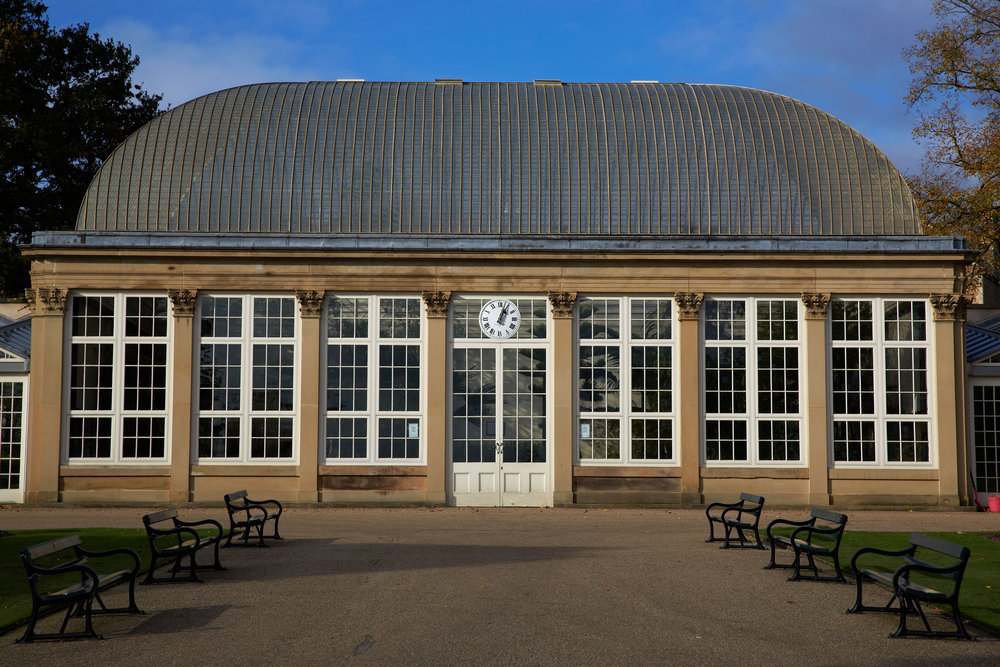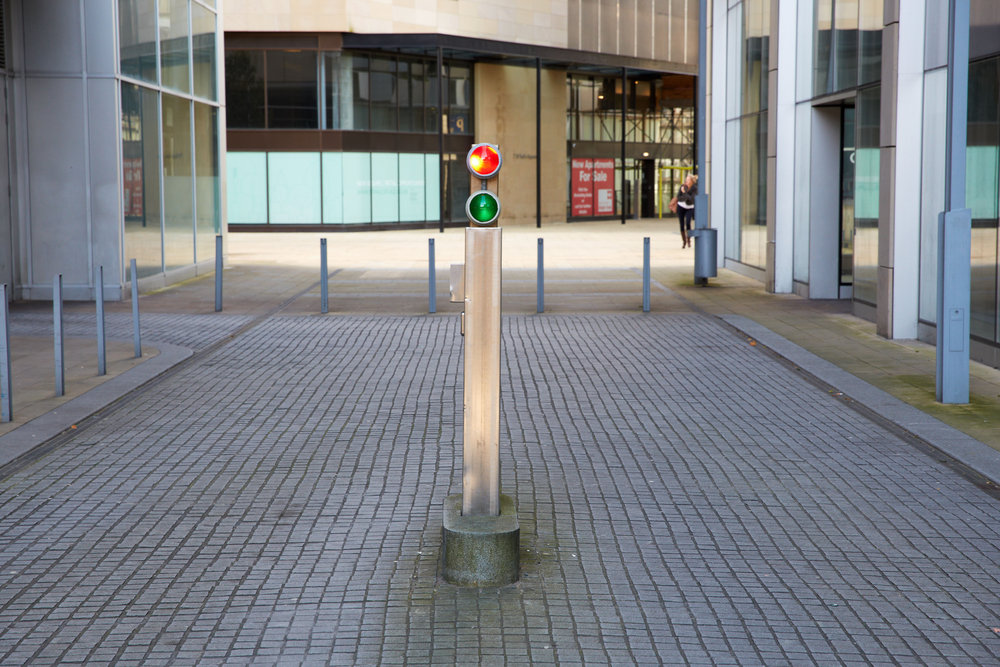Handling and features
Performance
Verdict
Specification

A professional standard zoom lens covering the popular 24-70mm focal range, which sports a constant fast maximum aperture of f/2.8 and silent focusing with full-time manual focus override. This lens carries a very high price tag of around £2300, which is really quite expensive for a standard zoom lens. In this review we'll take a look at how it performs and whether the premium price is justified.
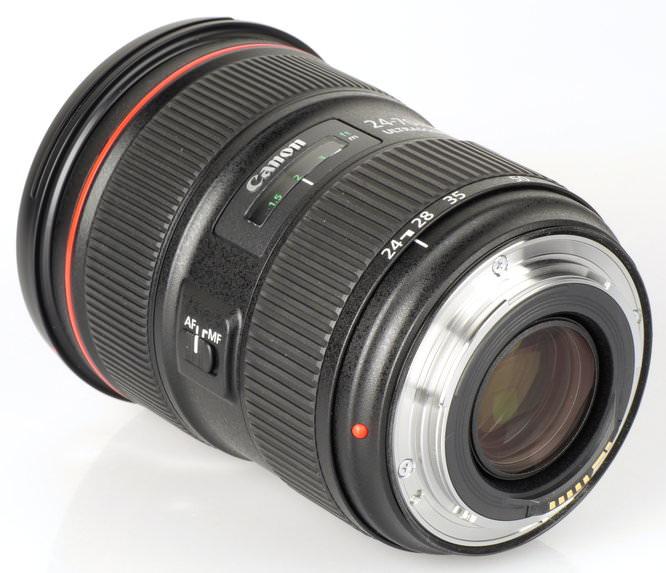
Canon EF 24-70mm f/2.8L II USM Handling and features
Build and design is typical of Canon's L series lenses, with tough black plastics and metal used throughout. The lens is weather sealed and designed to take the rigours of daily professional use. Despite the excellent build, this lens isn't overly heavy, weighing 805g. As a result the lens balances well on the EOS 5D MKIII used for testing even without a battery grip attached.
Auto focus is powered by an Ultrasonic motor, and focusing is very fast and accurate as a result. Manual adjustments can be made quickly at any point by turning the focus ring. The focusing ring is smooth and precise, which makes fine manual adjustments a pleasure to apply. Minimum focus is 38cm from the sensor plane, which is great for shooting in claustrophobic environments.
As focusing is performed internally, the 82mm filter ring does not rotate , which makes the lens ideal for use with graduated and polarising filters. The large 82mm diameter may be off-putting for those who've invested heavily in 77mm filters as this lens' predecessor accepted. Unlike the MkI version of this lens, the zoom mechanism extends as it is zoomed towards 70mm and a relatively shallow petal shaped hood clips onto the end of the lens.
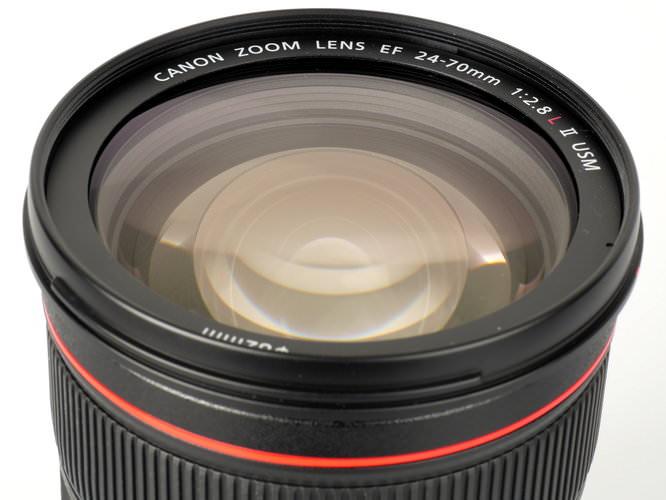
Canon EF 24-70mm f/2.8L II USM Performance
Sharpness in the centre of the frame is very good to outstanding throughout the zoom range. At 24mm and f/2.8 sharpness is just a shade below excellent levels in the centre and very good towards the edges. Stopping the lens down to f/4 results in outstanding sharpness in the centre at this focal length, with clarity towards the edges that approaches excellent levels.
Zooming to 35mm results in an increase in sharpness in the centre at maximum aperture, although the clarity towards the edges decreases slightly. Peak sharpness across the frame is achieved at f/5.6 for this focal length, where sharpness in the centre is outstanding, and approaching very good levels towards the edges of the frame.
Finally, at 70mm, the performance of this lens holds up very well indeed. At f/2.8 sharpness in the centre remains very good, with good clarity being produced towards the edges of the frame. Peak sharpness is again achieved at f/5.6. Here the clarity in the centre is outstanding, and very good towards the edges of the frame.
|
|
|
|
|
How to read our chartsThe blue column represents readings from the centre of the picture frame at the various apertures and the green is from the edges. Averaging them out gives the red weighted column.The scale on the left side is an indication of actual image resolution. The taller the column, the better the lens performance. Simple. For this review, the lens was tested on a Canon EOS 5D Mark III using Imatest. |
Chromatic aberrations are very well controlled, barely exceeding half a pixel width at most apertures and focal lengths. CA's just exceed half a pixel width between f/2.8 and f/11 at 24mm, rising as the lens is stopped down further. Still, this low level should cause very few issues, even in large prints and harsh crops from the edges of the frame.
|
|
|
|
|
How to read our chartsChromatic aberration is the lens' inability to focus on the sensor or film all colours of visible light at the same point. Severe chromatic aberration gives a noticeable fringing or a halo effect around sharp edges within the picture. It can be cured in software.Apochromatic lenses have special lens elements aspheric, extra-low dispersion etc. to minimize the problem, hence they usually cost more. For this review, the lens was tested on a Canon EOS 5D Mark III using Imatest. |
As is typical with lenses covering this focal range, falloff of illumination towards the corners of the frame is quite pronounced at 24mm. Here the corners of the frame are 2.6 stops darker than the image centre and illumination isn't visually uniform until the lens is stopped down to f/8. Falloff is less pronounced at 70mm. Here the corners are 1.7 stops darker at f/2.8 and illumination is visually uniform by f/5.6.
Distortion is very well controlled for a lens of this type. At 24mm 3.32% barrel distortion is present, which is replaced by 0.834% pincushion distortion at 70mm. The distortion pattern is uniform across the frame, which should make applying corrections in image editing software afterwards relatively straightforward.
Though the supplied lens hood isn't very deep, resistance to flare is very high and contrast remains excellent, even when shooting into the light.
Canon EF 24-70mm f/2.8L II USM Sample Photos
Value for Money
There is no way that the performance of this lens can be disputed however, the value for money aspect may be this lens' Achilles heel. Currently priced at around £2300, this lens is more than double the price of the optic it replaces, which retailed for around £1000 before it was discontinued. Even when comparing the price of this lens to Nikon's 24-70mm f/2.8, which has an excellent reputation for the performance it delivers, there is a gulf of around £1000 in price, as the Nikon optic retails for around £1250. This makes the Canon 24-70mm f/2.8 II USM look very expensive, or even overpriced.
Photographers on a budget, who require a lens covering this range, with a fast f/2.8 maximum aperture may also consider Sigma's 24-70mm f/2.8, which can be picked up for around £600. This lens lacks the weather sealing found on the Canon lens but sports a similar silent focusing motor.
Tamron's image stabilised 24-70mm f/2.8 VC USD may also be considered. This lens can be picked up for around £860 and sports optical stabilisation, a similar silent focusing motor and weather sealing.
Canon EF 24-70mm f/2.8L II USM Verdict
It seems Canon may be attempting to distinguish themselves from the competition by pricing their lens at a premium. There is no doubt that this lens delivers excellent optical performance in pretty much every way, but not many photographers, professional, or otherwise will be able to justify paying £1000 over the odds for this.
However if you do have £2300 burning a hole in your pocket, this lens will reward you with excellent sharpness, low CA, low distortion and excellent resistance to flare and loss of contrast.
The Canon EF 24-70mm f/2.8L II USM L lens offers good build quality and excellent sharpness.
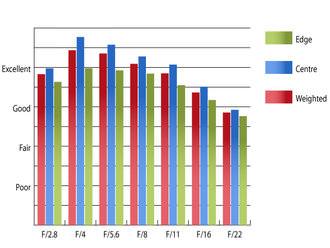 Resolution at 24mm
Resolution at 24mm Resolution at 35mm
Resolution at 35mm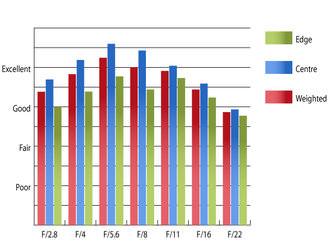 Resolution at 70mm
Resolution at 70mm Chromatic aberration at 24mm
Chromatic aberration at 24mm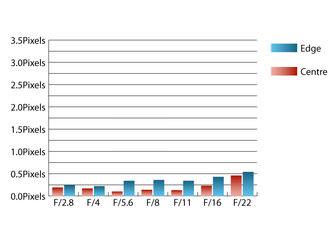 Chromatic aberration at 35mm
Chromatic aberration at 35mm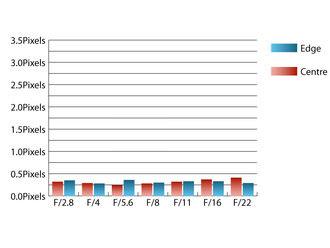 Chromatic aberration at 70mm
Chromatic aberration at 70mm
